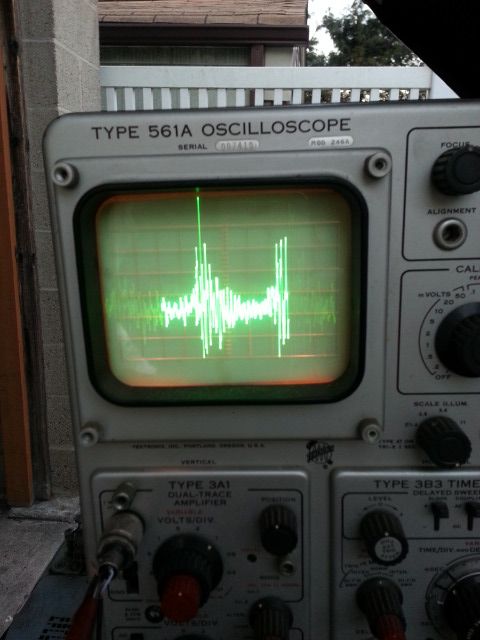I bought a piezo guitar microphone, clamped it on the #1 inector hardline of my 85 300D and took the pic below on my oscilloscope. There is a lot of noise (which is to be expected) but you can see the 2 disctinct pulses which are 40 milli sec apart (25 hz). The engine RPM is probably somewhere around 650 to 700.
Is this signal plausible? I don't know the relationship of RPM vs injector pump firing rates on a 5 cylinder 617.952. I don't want to waste my time trying to amplify and filter this signal if it is garbage.
This is my first step in attempting to come up with a timing light triggered by injector line pulses. Wish me luck.








